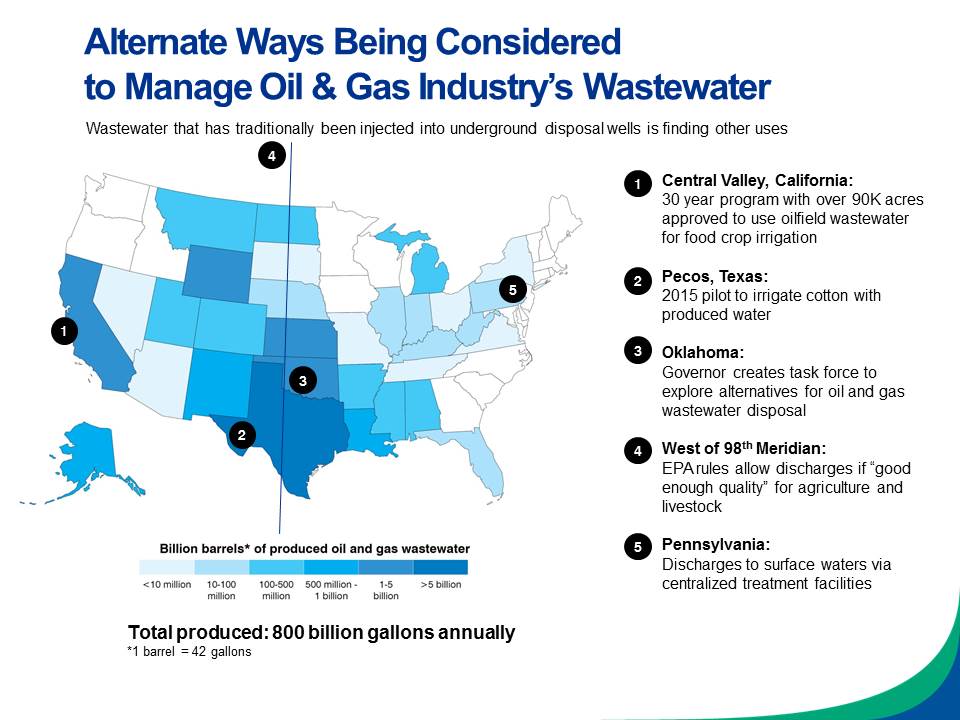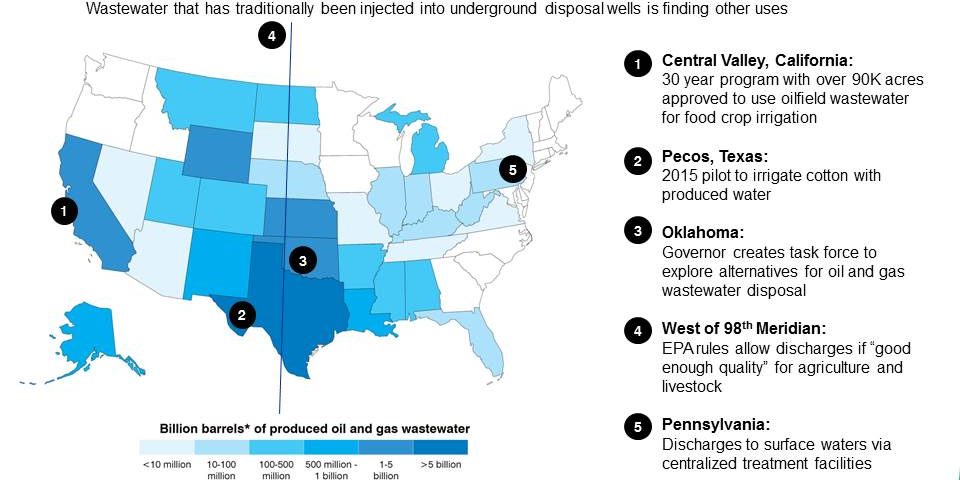The engineers and scientists who study the oil and gas industry’s wastewater know the term “beneficial reuse” well. It’s the seldom-used technique of taking wastewater produced from an oil or gas well, treating it, and then using it for other purposes — like watering crops (including organic crops) or feeding livestock. It’s a rare practice that drought-stricken areas like California have used for a number of years, although little is known about associated health or safety risks since, usually, about 98% of wastewater is injected into disposal wells deep underground. However, as demands for water increase, and concerns about disposal wells (which have been linked to earthquakes) rise, beneficial reuse is being considered as a viable option.
But just because we can use wastewater for other purposes – does that mean we should?
Scientists researching these issues still have a lot of questions. Our recent article in World Water: Water Reuse & Desalination—a publication of the Water Environment Federation — highlights some of the biggest knowledge gaps we still need to address in order to confidently answer that question.
A couple of the largest questions needing answers: what is in this wastewater and could it be toxic?
The oil and gas industry’s wastewater contains a vast assortment of chemicals – including constituents that are pumped into a well, chemicals already present in the fossil fuel formation, and constituents that are formed when these chemicals mix. There is not a true count of how many chemicals may be in the water (another huge question to be answered), but a review of the national chemical disclosure database FracFocus and other literature identifies more than 1,600 different chemicals potentially present.

Some advocates for beneficial reuse argue we know enough to safely treat and use the wastewater for crop irrigation. But the unfortunate reality is that our current scientific methods can only detect about a quarter of those 1,600 chemicals. And we know even less about how toxic they may be – critical toxicity information is available for less than 20% of these chemicals.
Even of the small group of chemicals in which detection methods do exist – they don’t always work. Oil and gas wastewater is extremely salty, in some cases 10 times saltier than the ocean, and testing technologies don’t always perform in such high salt content. Meaning we don’t even know how to adequately detect potentially toxic chemicals.
This kick starts a chain reaction of other unknowns. Without accurate testing, we can’t know what chemicals we could be exposed to or how toxic those chemicals might be, which means we can’t be sure that current treatment processes are effective or regulatory programs adequately protective.
Even in California where the practice of using treated oil and gas wastewater for irrigating crops has been done for years, this practice is being looked at more closely. Last year The Central Regional Water Quality Control Board convened a panel of experts to examine the potential adverse impacts of beneficial reuse. The panel’s work is still ongoing, but a report authored by some of the panelists raised a number of viable concerns.
EDF is leading a number of efforts to expand the needed science. Last year we held a series of workshops with experts from across the country to assess how we can use existing technologies and tools to help narrow some of these knowledge gaps, and as a result have spurred a number of new research projects, including some we are leading to improve current wastewater testing methods.
We’re making progress, but we still have a way to go. Before policy makers start green-lighting an increase in beneficial reuse, we need to honestly acknowledge what is known, what is not, what is of concern, and give science time to provide some answers.
Enviroshop is maintained by dedicated NetSys Interactive Inc. owners & employees who generously contribute their time to maintenance & editing, web design, custom programming, & website hosting for Enviroshop.
